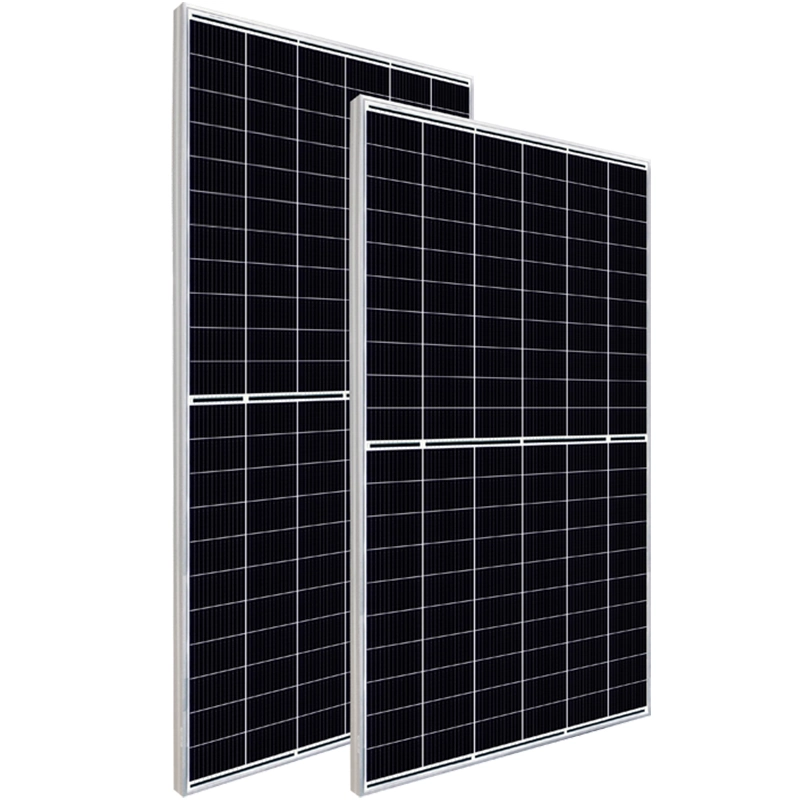Structure and composition of JA solar panels
4 min readJA Solar Panel is a high-efficiency photovoltaic power generation equipment that can convert solar energy into electrical energy. Before understanding the structure and composition of JA solar panels, let's first understand the basic principles of solar panels.
The basic principle of solar panels is the photoelectric effect, that is, when light shines on a semiconductor material, electrons are excited, thereby generating an electric current. JA Solar panels use silicon material, which is a common semiconductor material with good photoelectric conversion efficiency.
The structure of JA Solar panels mainly includes the following parts: positive electrode, negative electrode, P-N junction, back electrode and packaging material.

First of all, the positive electrode is an important part of the solar panel, which is usually made of silicon material. Silicon material has good photoelectric conversion efficiency and can convert light energy into electrical energy. The surface of the positive electrode is usually specially treated to increase its light absorption capacity.
Secondly, the negative electrode is also an important part of the solar panel, which is usually made of silicon material. The function of the negative electrode is to receive electrons, thereby forming an electric current. The surface of the negative electrode is usually specially treated to increase its ability to receive electrons.
The P-N junction is a key part of the solar panel, it is the bonding layer between the positive and negative electrodes. The P-N junction is formed by doping different impurities into the silicon material, which causes the electronic energy level of the silicon material to change. The function of the P-N junction is to form an electric field, prompting electrons to flow from the positive electrode to the negative electrode, thereby generating current.
The back electrode is another important component of the solar panel, which is usually made of metallic materials. The function of the back electrode is to collect electrons, thereby creating an electric current. The design of the back electrode needs to take into account the conductivity of the current and the efficiency of electron collection.
Finally, the encapsulation material is the protective layer of the solar panel, which is usually made of glass or plastic materials. The function of the encapsulation material is to protect the solar panel from the external environment and also to increase the absorption capacity of solar energy.
In addition to the above main components, JA Solar panels also include connecting wires and junction boxes. Cables are used to connect solar panels to other devices, such as battery banks or inverters. The junction box is located on the back of the solar panel and is used to connect solar cell chips and connecting wires.
To sum up, the structure and composition of JA Solar panels mainly include positive electrode, negative electrode, P-N junction, back electrode and packaging materials. These parts work together to convert solar energy into electrical energy through the photoelectric effect. JA Solar panels are made of silicon material and have good photoelectric conversion efficiency. Through continuous research and innovation, the efficiency and stability of JA Solar panels will continue to improve, providing more sustainable energy solutions for mankind.
As a JA Solar panel manufacturer, we take producing and selling high-quality products as our core mission. We are not only committed to providing reliable and efficient solar solutions, but also continuously promoting technological innovation and sustainable development. By continuously optimizing our production processes and adopting advanced manufacturing technologies, we ensure that our solar panels have excellent performance and reliability to meet customer needs.
JA solar panel: an efficient, reliable and environmentally friendly solar power generation tool
JA Solar Panel Working Principle and Technical Analysis
JA solar panel installation and maintenance guide
Key factors to extend the service life of JA solar panels
What are the factors that affect the efficiency of JA solar panels?
JA solar panel efficiency cleaning guide
How efficient is JA solar panel?
How to choose a high-quality JA solar panel supplier
JA Solar Panel Shipping and Storage Guide
Explore the environmental advantages of JA solar panels
JA solar panel price and cost analysis
How to buy high-quality JA solar panels
Impact of environmental factors on JA solar panels
How to improve the working efficiency of JA solar panels in the rainy season
The importance of dustproof and waterproof design of JA solar panels
Are JA Solar panels a good choice for home solar?
Is the return on investment of JA Solar panels high?
What are the applications of JA solar panels?
How to choose the right JA Solar panels for your home?
Research on materials of JA Solar panels
Yana
yana@janewenergy.com

